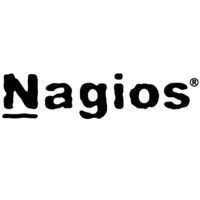Need advice about which tool to choose?Ask the StackShare community!
Amazon CloudWatch vs Nagios: What are the differences?
Key Differences between Amazon CloudWatch and Nagios
Introduction:
Amazon CloudWatch and Nagios are both monitoring tools used in the field of IT infrastructure management. While they share some similarities, there are several key differences that set them apart from each other. In this article, we will explore these differences in detail.
Scalability and Infrastructure: Amazon CloudWatch is a cloud-based monitoring service offered by Amazon Web Services (AWS). It is designed to monitor AWS resources and applications running on AWS infrastructure. On the other hand, Nagios is an open-source monitoring tool that can be used to monitor both on-premises and cloud-based infrastructure. It provides flexibility to monitor a wide range of systems and applications.
Cost Model: Amazon CloudWatch has a pay-as-you-go pricing model, allowing users to pay only for the resources they use. The cost is determined based on the number of metrics, alarms, and API requests. Nagios, being open source, is free to use. However, it requires a dedicated server to run the monitoring software, which may incur additional hardware and maintenance costs.
Integration and Compatibility: Amazon CloudWatch is tightly integrated with other AWS services, providing seamless monitoring and management capabilities for AWS resources. It offers out-of-the-box integration with various AWS services, enabling easy configuration and monitoring of cloud-based infrastructure. Nagios, being a more general-purpose monitoring tool, can be integrated with different systems and applications through plugins, allowing monitoring of a wide range of environments and technologies.
Alerting and Notification: Amazon CloudWatch provides advanced alerting and notification capabilities. It allows users to set up alarms based on predefined thresholds and sends notifications via various channels like email, SMS, and AWS Simple Notification Service (SNS). Nagios also offers powerful alerting and notification features, allowing users to configure alerts based on specific conditions and send notifications via email, SMS, and other communication channels.
Automation and Orchestration: Amazon CloudWatch integrates well with AWS automation and orchestration services like AWS Lambda and AWS Systems Manager. This enables users to automate various operations and tasks based on CloudWatch metrics and alarms. Nagios, being a more standalone monitoring tool, may require additional configurations and scripts to automate tasks based on monitoring data.
Analytics and Visualization: Amazon CloudWatch offers built-in analytics and visualization features, allowing users to analyze monitoring data and gain insights into system performance and trends. It provides interactive dashboards and customizable charts to visualize metrics over time. Nagios, on the other hand, relies on third-party plugins and tools for analytics and visualization, which may require additional setup and configuration.
In Summary, Amazon CloudWatch is a scalable cloud-based monitoring service tightly integrated with AWS, while Nagios is an open-source monitoring tool with flexibility to monitor various infrastructure environments. CloudWatch has a pay-as-you-go model, offers seamless AWS integration, advanced alerting, automation capabilities, and built-in analytics. Nagios, being free to use, requires dedicated server setup, offers general-purpose monitoring, plugin-based integration, powerful alerting, automation with additional setup, and relies on third-party tools for analytics and visualization.
- free open source
- modern interface and architecture
- large community
- extendable I knew Nagios for decades but it was really outdated (by its architecture) at some point. That's why Icinga started first as a fork, not with Icinga2 it is completely built from scratch but backward-compatible with Nagios plugins. Now it has reached a state with which I am confident.
Pros of Amazon CloudWatch
- Monitor aws resources76
- Zero setup46
- Detailed Monitoring30
- Backed by Amazon23
- Auto Scaling groups19
- SNS and autoscaling integrations11
- Burstable instances metrics (t2 cpu credit balance)5
- HIPAA/PCI/SOC Compliance-friendly3
- Native tool for AWS so understand AWS out of the box1
Pros of Nagios
- It just works53
- The standard28
- Customizable12
- The Most flexible monitoring system8
- Huge stack of free checks/plugins to choose from1
Sign up to add or upvote prosMake informed product decisions
Cons of Amazon CloudWatch
- Poor Search Capabilities2








































